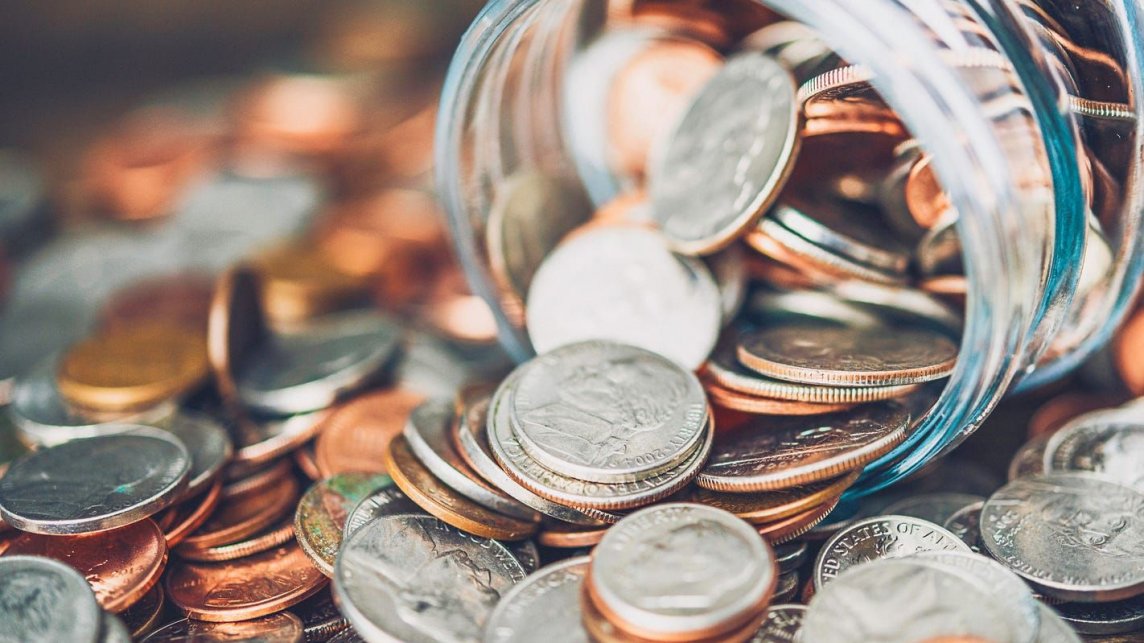The Coin Shortage: Fact or Fiction?

Some people have strong feelings about the penny. And others think it should just go the way of the silver half dollar – a seldom seen sentimental coin that is largely passed on from a grandparent to a grandchild to evoke the “good old days.” The penny, as annoying as it is, has been an important coin in a world where prices often end in .99, and more important when most people paid in cash. However, a penny, because of inflation, costs two cents to make, which makes its demise more likely than the silver half dollar.
Some people have strong feelings about the penny. And others think it should just go the way of the silver half dollar – a seldom seen sentimental coin that is largely passed on from a grandparent to a grandchild to evoke the “good old days.” The penny, as annoying as it is, has been an important coin in a world where prices often end in .99, and more important when most people paid in cash. However, a penny, because of inflation, costs two cents to make, which makes its demise more likely than the silver half dollar.
Even with COVID-19 in the news, if you’ve been listening or watching lately, you’ve probably seen stories about businesses in your area asking customers to pay in exact change—or even to bring in their own coins, to be exchanged for paper bills. This is because of a strange effect of the pandemic: a coin shortage.
The U.S. Mint, which produces coins, has been working at a limited capacity because of employee safety measures, and the coins that are circulated by consumers in a normal economy have been, like most of us, quarantined at home.
We’re ordering more things online or opting, out of fear of contamination, to pay for food and other in-person purchases with credit or debit cards. Some businesses that have always been primarily cash transactions—coffee shops, bakeries, convenience stores, and other places that sell goods for under $10—have closed or restricted payment methods.
There’s also an exchange problem: some people, especially those who are older and more fearful of exposure to the virus, have been wisely avoiding going out in public, including to banks, where they might otherwise have converted their coins into cash. Another roadblock is the reduction of coins that banks send to the Federal Reserve, which manages the distribution of coins around the country.
The shortage is an inconvenient challenge for most of us when we are paying for a parking meter, going to a coin-operated laundromat, getting on a bus, or leaving a cash tip at our favorite coffee shop.
But nearly 8 million households are “unbanked,” meaning that they have no checking or savings account, relying instead on predatory services such as pawn shop loans or payday loans. Many low-income families pay their bills with money orders, and some even still pay with cash.
Americans who make $25,000 a year or less use cash for around 45 percent of their purchases.
In recent weeks, though, the Mint has begun to return to normal operations, with safeguards in place to protect workers. The Mint is set to produce 1.65 billion coins every remaining month of 2020. (Usually, there are about 1 billion coins produced a month.) It will take some time, however, until those coins are fully integrated into our retail system.
Banks and large retail chains have taken their own steps. To incentivize customers, some banks are offering additional cash when customers bring in their rolled coins. Other businesses are simply rounding their payments to the nearest dollar.
As Connecticut continues to move toward recovery, coins will begin to move through the economy again; it is projected that we could see an end to the shortage in 6 to 12 months if we all follow the rules to restrict movement, wear a mask and wash our hands.
In the meantime, dump those big jars of coins you’ve been ignoring and roll them up, take them to the bank and exchange them for bills, or just make a deposit. You probably haven’t been to your bank in a while, they’ll be happy to see you, and happier yet that you are recirculating coins! I recently dumped my coin jar and gave my 13-year-old neighbor a dollar for every roll she completed. I ended up taking $97.00 to the bank, and she made a hefty donation to her “cool sneakers” fund.
As always, stay safe, and Pass it On to friends and neighbors.
This article was written by Catherine Blinder, chief education and outreach officer of the Department of Consumer Protection of the State of Connecticut. To learn more about how the Department of Consumer Protection can help, visit us online at www.ct.gov/dcp.







